The coordinated action of the MVB pathway and autophagy ensures cell survival during starvation
- PMID: 25902403
- PMCID: PMC4424281
- DOI: 10.7554/eLife.07736
The coordinated action of the MVB pathway and autophagy ensures cell survival during starvation
Abstract
The degradation and recycling of cellular components is essential for cell growth and survival. Here we show how selective and non-selective lysosomal protein degradation pathways cooperate to ensure cell survival upon nutrient limitation. A quantitative analysis of starvation-induced proteome remodeling in yeast reveals comprehensive changes already in the first three hours. In this period, many different integral plasma membrane proteins undergo endocytosis and degradation in vacuoles via the multivesicular body (MVB) pathway. Their degradation becomes essential to maintain critical amino acids levels that uphold protein synthesis early during starvation. This promotes cellular adaptation, including the de novo synthesis of vacuolar hydrolases to boost the vacuolar catabolic activity. This order of events primes vacuoles for the efficient degradation of bulk cytoplasm via autophagy. Hence, a catabolic cascade including the coordinated action of the MVB pathway and autophagy is essential to enter quiescence to survive extended periods of nutrient limitation.
Keywords: MVB pathway; S. cerevisiae; autophagy; biochemistry; cell biology; endocytosis.
Conflict of interest statement
The authors declare that no competing interests exist.
Figures


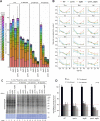

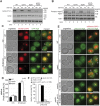
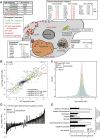
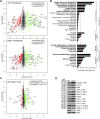





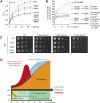

Similar articles
-
Regulation of membrane protein degradation by starvation-response pathways.Traffic. 2012 Mar;13(3):468-82. doi: 10.1111/j.1600-0854.2011.01314.x. Epub 2012 Jan 8. Traffic. 2012. PMID: 22118530 Free PMC article.
-
Glucose starvation inhibits autophagy via vacuolar hydrolysis and induces plasma membrane internalization by down-regulating recycling.J Biol Chem. 2014 Jun 13;289(24):16736-47. doi: 10.1074/jbc.M113.525782. Epub 2014 Apr 21. J Biol Chem. 2014. PMID: 24753258 Free PMC article.
-
Bulk RNA degradation by nitrogen starvation-induced autophagy in yeast.EMBO J. 2015 Jan 13;34(2):154-68. doi: 10.15252/embj.201489083. Epub 2014 Dec 2. EMBO J. 2015. PMID: 25468960 Free PMC article.
-
Pexophagy in yeasts.Biochim Biophys Acta. 2016 May;1863(5):992-8. doi: 10.1016/j.bbamcr.2015.09.023. Epub 2015 Sep 26. Biochim Biophys Acta. 2016. PMID: 26409485 Review.
-
The ubiquitin code of yeast permease trafficking.Trends Cell Biol. 2010 Apr;20(4):196-204. doi: 10.1016/j.tcb.2010.01.004. Trends Cell Biol. 2010. PMID: 20138522 Review.
Cited by
-
Mammalian copper homeostasis requires retromer-dependent recycling of the high-affinity copper transporter 1.J Cell Sci. 2020 Aug 25;133(16):jcs249201. doi: 10.1242/jcs.249201. J Cell Sci. 2020. PMID: 32843536 Free PMC article.
-
The endosomal sorting complex required for transport repairs the membrane to delay cell death.Front Oncol. 2022 Oct 18;12:1007446. doi: 10.3389/fonc.2022.1007446. eCollection 2022. Front Oncol. 2022. PMID: 36330465 Free PMC article. Review.
-
Recycling of cell surface membrane proteins from yeast endosomes is regulated by ubiquitinated Ist1.J Cell Biol. 2022 Nov 7;221(11):e202109137. doi: 10.1083/jcb.202109137. Epub 2022 Sep 20. J Cell Biol. 2022. PMID: 36125415 Free PMC article.
-
VAMP724 and VAMP726 are involved in autophagosome formation in Arabidopsis thaliana.Autophagy. 2023 May;19(5):1406-1423. doi: 10.1080/15548627.2022.2127240. Epub 2022 Oct 13. Autophagy. 2023. PMID: 36130166 Free PMC article.
-
The Lysosome as a Regulatory Hub.Annu Rev Cell Dev Biol. 2016 Oct 6;32:223-253. doi: 10.1146/annurev-cellbio-111315-125125. Epub 2016 Aug 3. Annu Rev Cell Dev Biol. 2016. PMID: 27501449 Free PMC article. Review.
References
Publication types
MeSH terms
Substances
Grants and funding
LinkOut - more resources
Full Text Sources
Molecular Biology Databases
Miscellaneous

